Projects Cavitation and Multiphase Flows
Cavitation Control using Mesoscale Surface Structuring in Marine Engineering and Hydraulic Systems
Data
Involved Researcher:
Dr.-Ing. Ebrahim Kadivar
Supervisor:
Prof. Dr.-Ing. Bettar el Moctar
Funding:

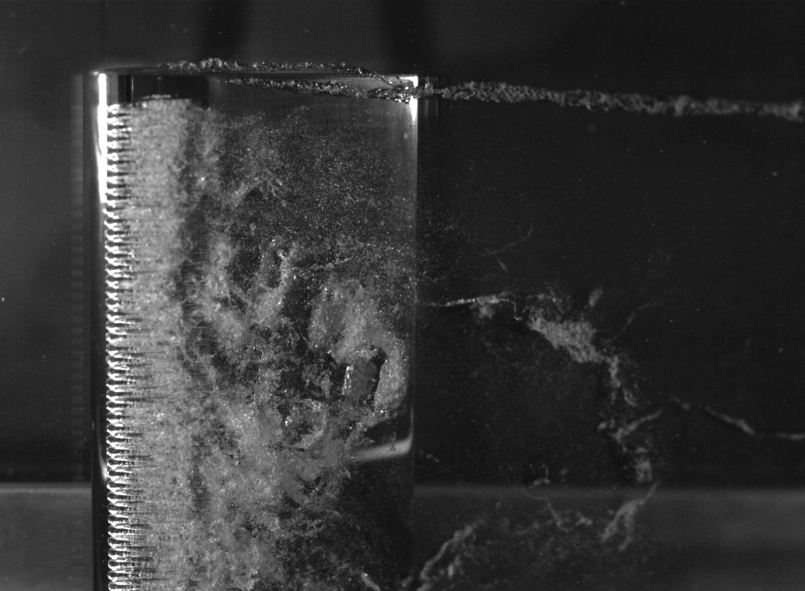
Project Information
The main objective of this project is to develop passive cavitation control methods for different types of cavitation, and to mitigate their undesirable effects on hydrofoils. With this aim in view, we intend to implement mesoscale (of the order of one, or less than one millimeter) regular or irregular wall structuring. Various surface textures will be produced using appropriate processing technologies (milling, deformational cutting, detonation or plasma spraying). Several bodies, including, benchmark hydrofoils and laboratory prototypes (scaled-down models) of propellers and hydrofoils, with diverse surface morphologies, will be tested in separate cavitation tunnels, employing modern panoramic techniques for two-phase flow diagnostics with high temporal and spatial resolutions. The experiments will be performed for a wide range of flow regimes on the angle of attack, cavitation number and Reynolds numbers, accompanied by numerical simulations based on PANS (Partially-Averaged Navier Stokes) approaches for the same flow conditions (at model scale) as well as at full-scale. Based on the numerical and experimental results, the effects of such wall structuring on the inception and evolution of different types of hydrodynamic cavitation and the associated flow turbulence structures, will be investigated in detail. The results of this project are proposed to serve as an important scientific basis for future developments of ship propulsion systems and hydraulic machinery, in order to extending their longevity and to increase their efficiency.
Experimental und Numerical Investigation of Thermodynamic Effects on the Dynamic of Cavitation Bubbles
Data
Involved Researcher:
Dr.-Ing. Ebrahim Kadivar
Supervisor:
Prof. Dr.-Ing. Bettar el Moctar
Funding:

Cooperation Partners:
Dr. Thanh Hoang Phan, Prof. Warn-Gyu Park, School of Mechanical Engineering, Pusan National University, Pusan, South Korea.
Project Information
As part of a project-cooperation between the university Duisburg-Essen (UDE) and the Pusan National University (PNU), numerical and experimental investigations were conducted on the thermodynamic effects on single cavitation bubble dynamics. For this purpose, the qualitative and quantitative parameters of a single bubble’s dynamic while collapsing in fluids were analyzed. The results were discussed and to support future work, suggestions were elaborated. Research activities were established regarding the thermodynamic and dynamic mechanisms of collapsing cavitation bubbles. Furthermore, there are workshops at the universities for researchers and PhD students to further discuss the achieved results. Additionally, mutual publications in high-ranking international professional journals were also prepared.
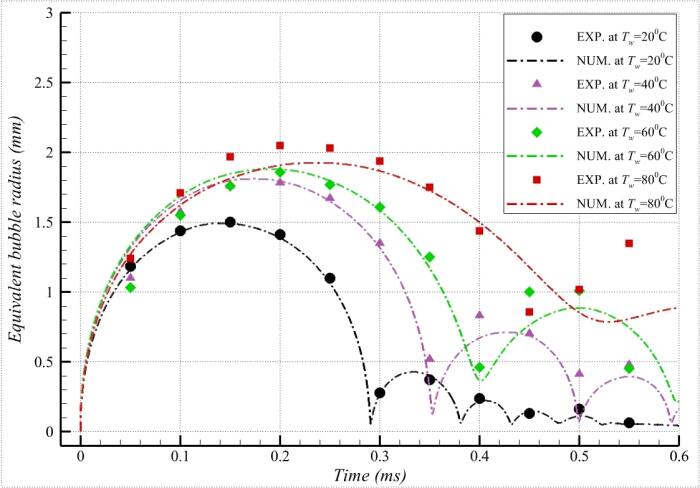
Thermodynamic Effetcts on Single Cavitation Bubble Dynamics under Various Ambient Temperature Conditions, Phys. of Fluids,
Source: Phan, T.H.,Kadivar, E., Nguyen, V.T., el Moctar, O., Park, W.G. (2022)
Interaction between cavitating flows around hydrofoils and structural vibrations
Data
Involved Researcher:
Yuxin Lin (M.Sc.)
Supervisor:
Prof. Dr.-Ing. Bettar el Moctar
Funding :

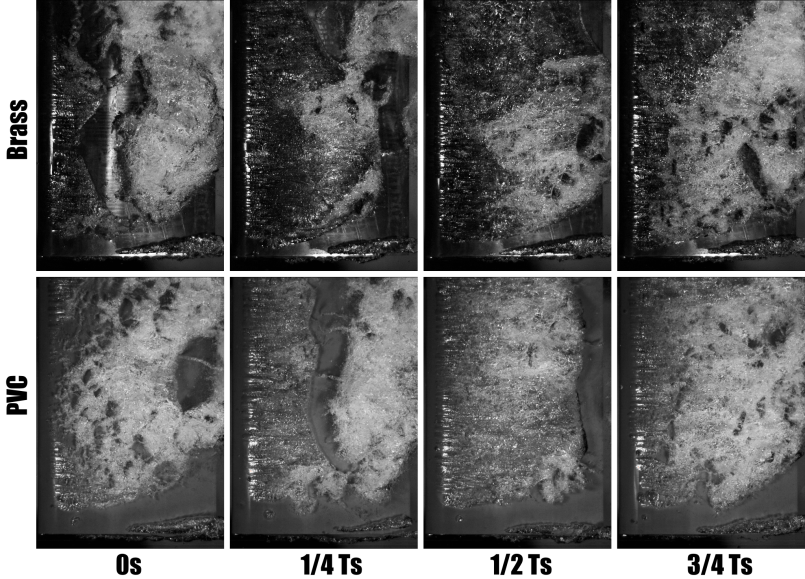
Project Information
Cavitation is an undesirable phenomenon in most cases. It plays an important role in many technical areas. In marine engineering, cavitation is well-known for its erosive effects on rudders and propellers (ship attachments), e.g. as a result of the bursting of cavitation bubbles directly on rigid surfaces. Cavitation can also cause vibrations due to pressure fluctuations, loss of efficiency, and noise emissions. Within the course of this project, the interaction between the cavitating flow around hydrofoils and the cavitation-induced structural vibrations are experimentally investigated. Rigid and elastic structures of hydrofoils are used for this purpose. The structural vibrations and the velocity field are measured using optical methods with a high temporal resolution. Furthermore, the associated forces and moments are measured. The cavitation structures are captured with high-speed cameras.
Investigation of the phase change of cavitation nano bubbles
Data
Involved Researcher:
Dr.-Ing. Mazyar Dawoodian
Supervisor:
Porf. Dr.-Ing. Bettar el Moctar
Funding:

Project Information
In this project, the change of phases among cavitation nano bubbles is investigated, taken the sort and allocation of germs under consideration. At a molecular level, the understanding of this physical phenomenon is of fundamental importance to build a model. During this project, we use simulation at a molecular dynamic basis.
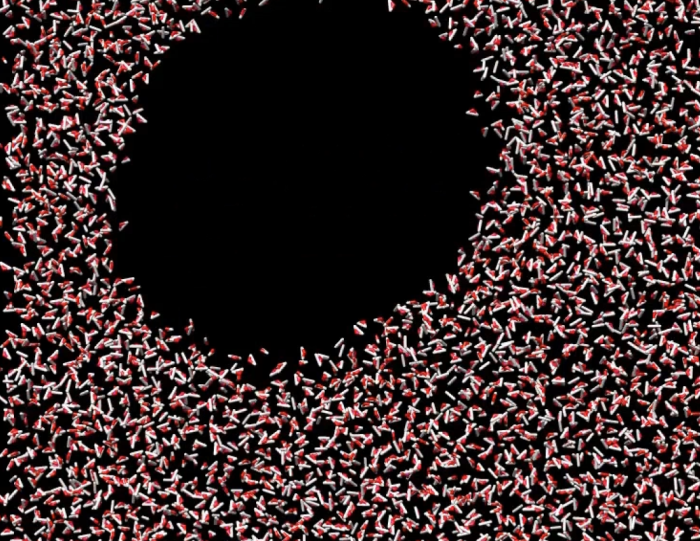
Moleculardynamical investigation of effects of germs on the phase change.
Dynamic of cavitation bubbles at the boundary surface of rigid and elastic structures
Data
Involved Researcher:
Gohar Moloudichiyaneh (M.Sc.)
Supervisor:
Prof. Dr.-Ing. Bettar el Moctar
Funding:

Project Information
Cavitation plays a vital part in many fields. In the fields of engineering-science, cavitation is well-known by its erosive effects due to collapsing of the cavitation bubbles on structural surfaces. This collapsing near a structure induces shock waves triggering “so-called" Microjets which could harm or damage structural surfaces. Most investigations deal with the free collapsing of single bubbles or collapsing near a planar fixed structure, whereas the purpose of this project is the numerical and experimental investigation of the bubbles’ dynamic at the boundary surface of rigid and elastic structures.
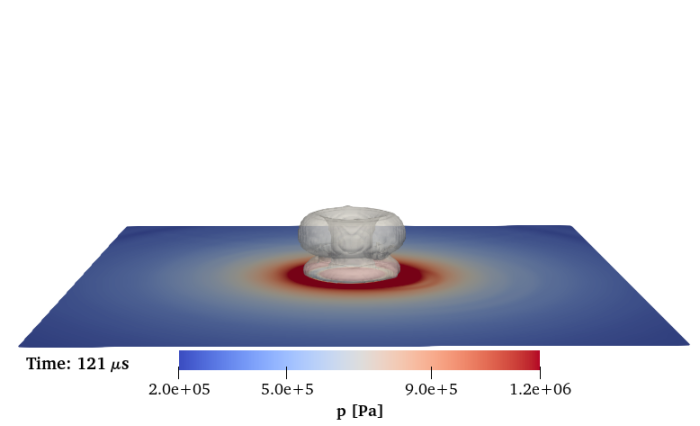
Simulation of a collapsing cavitation bubble.

